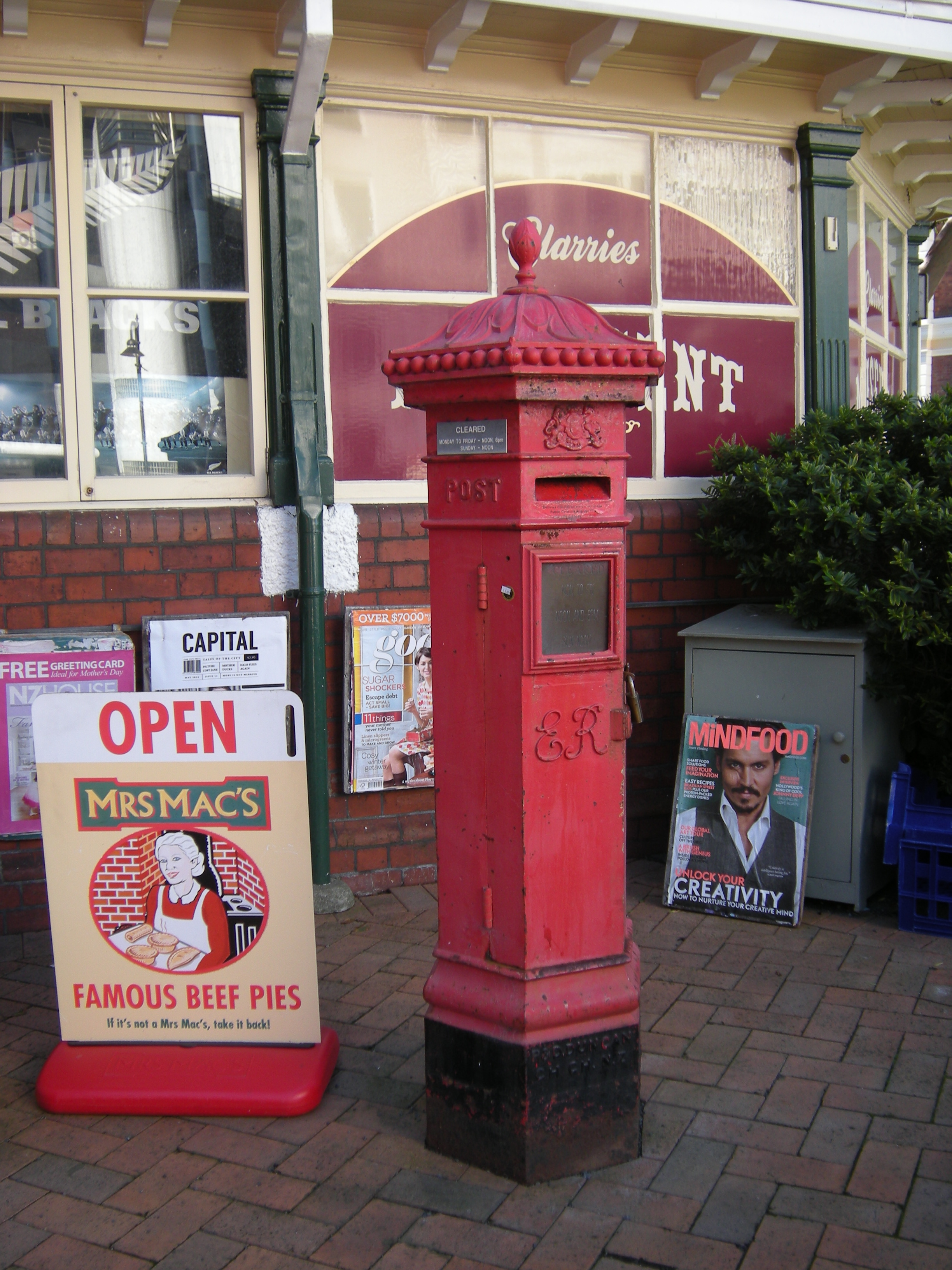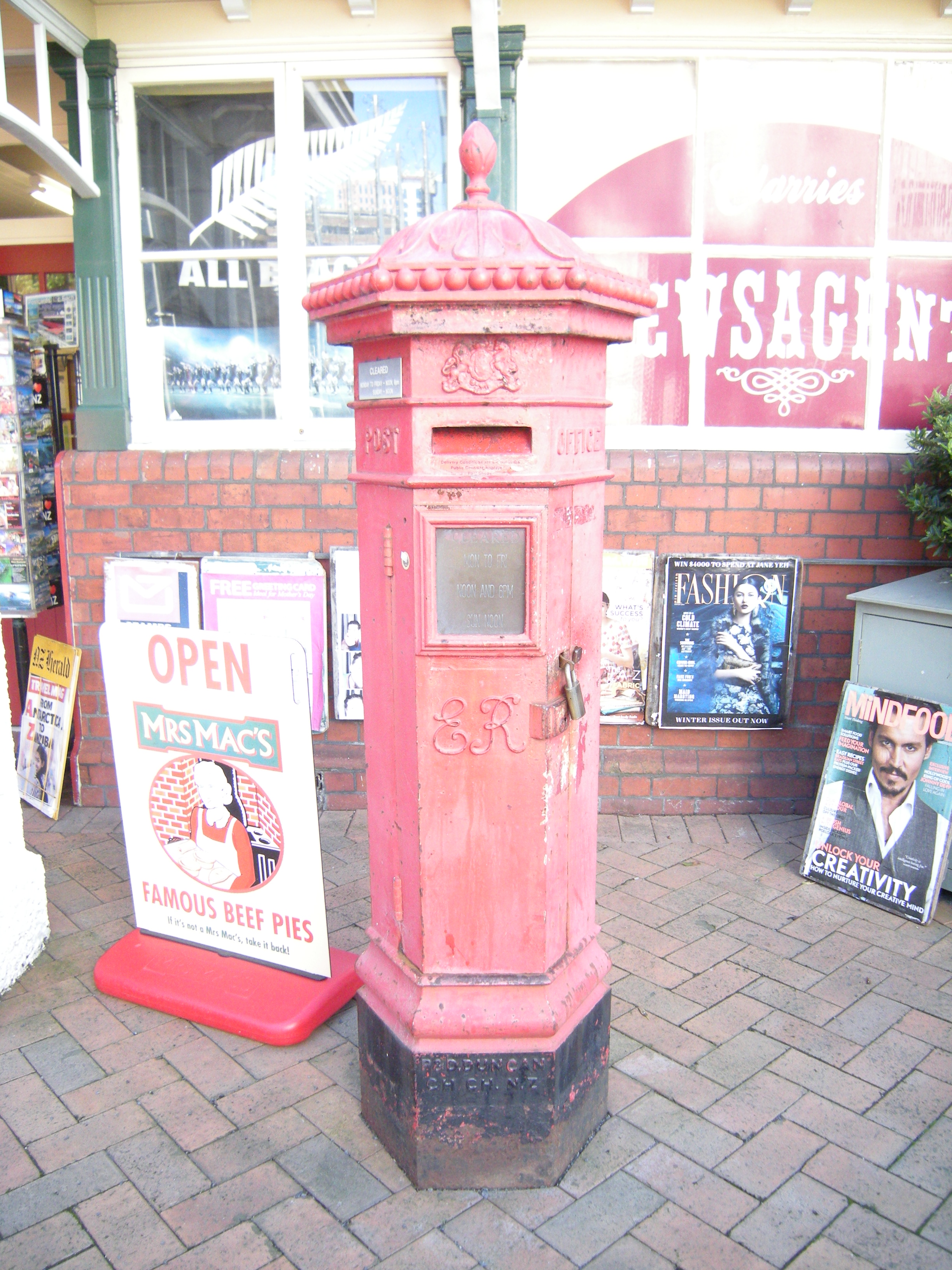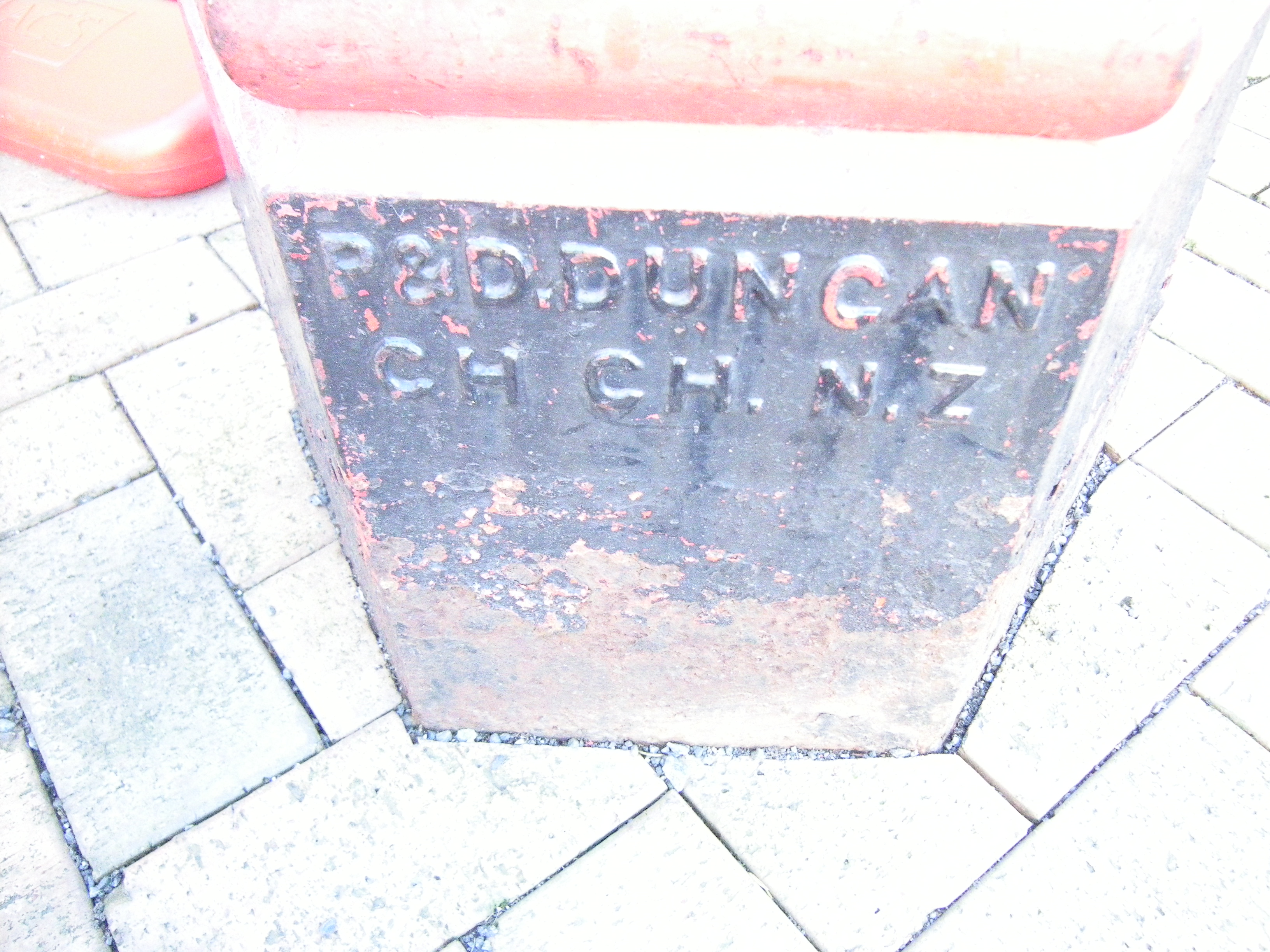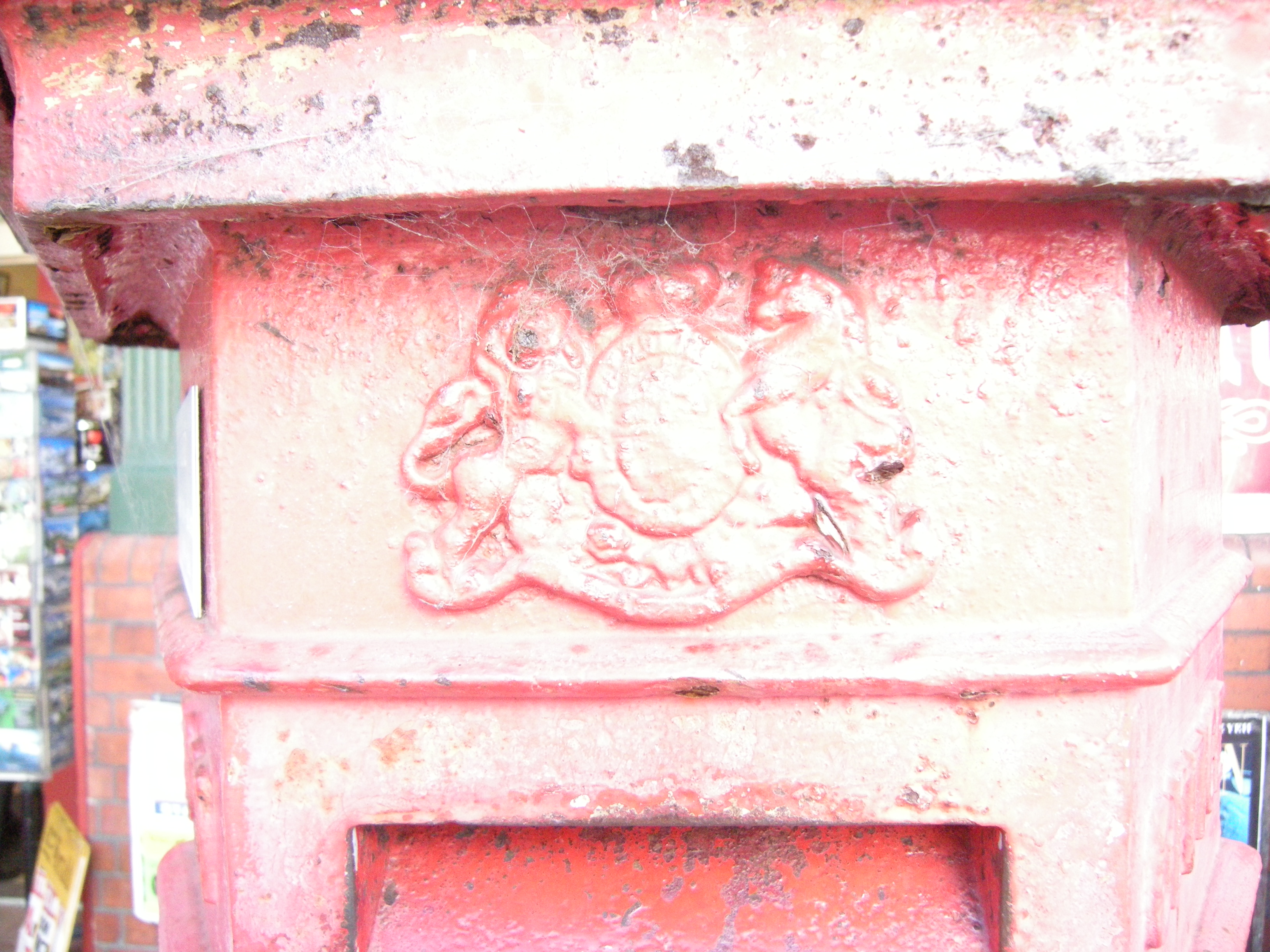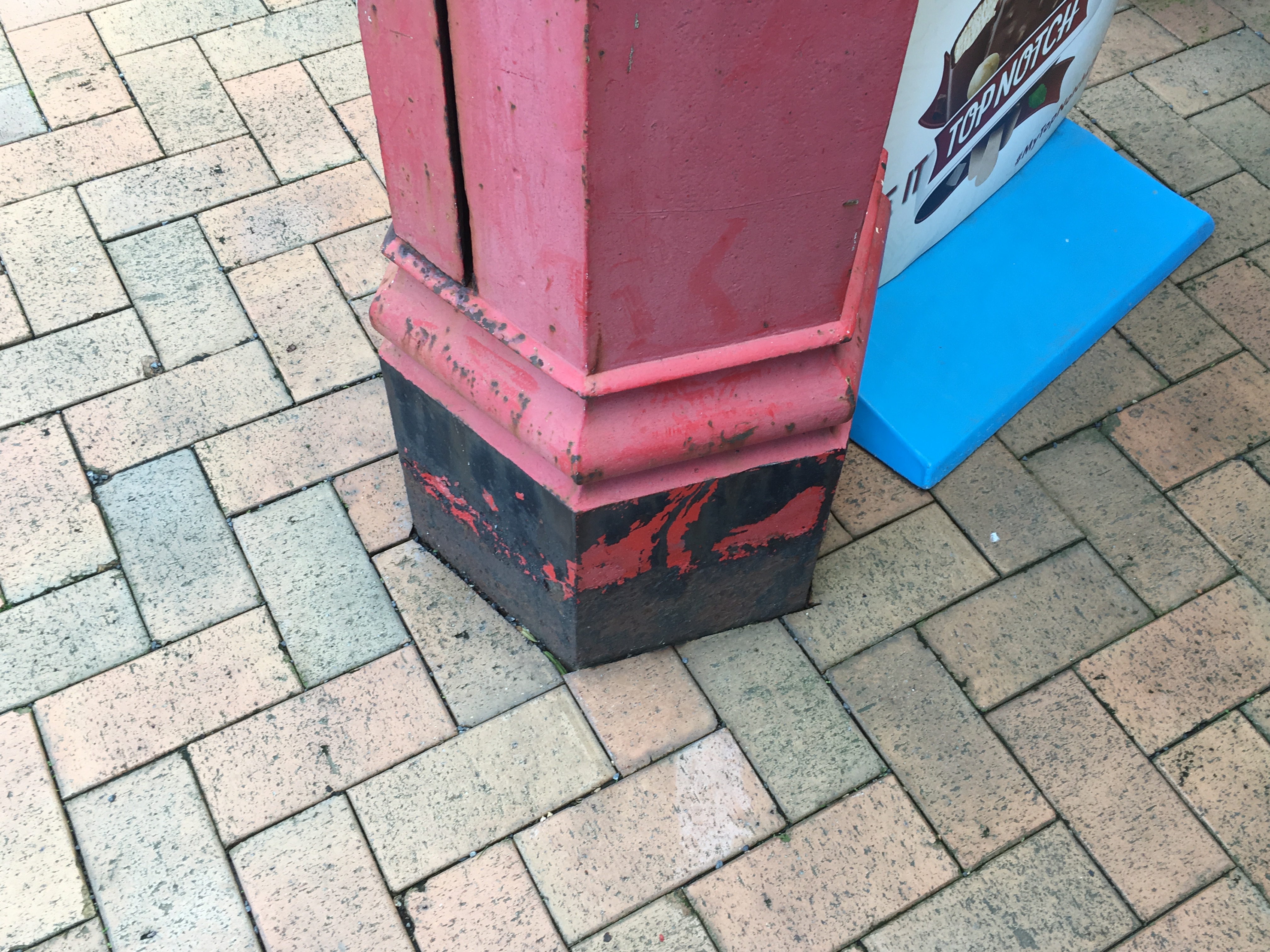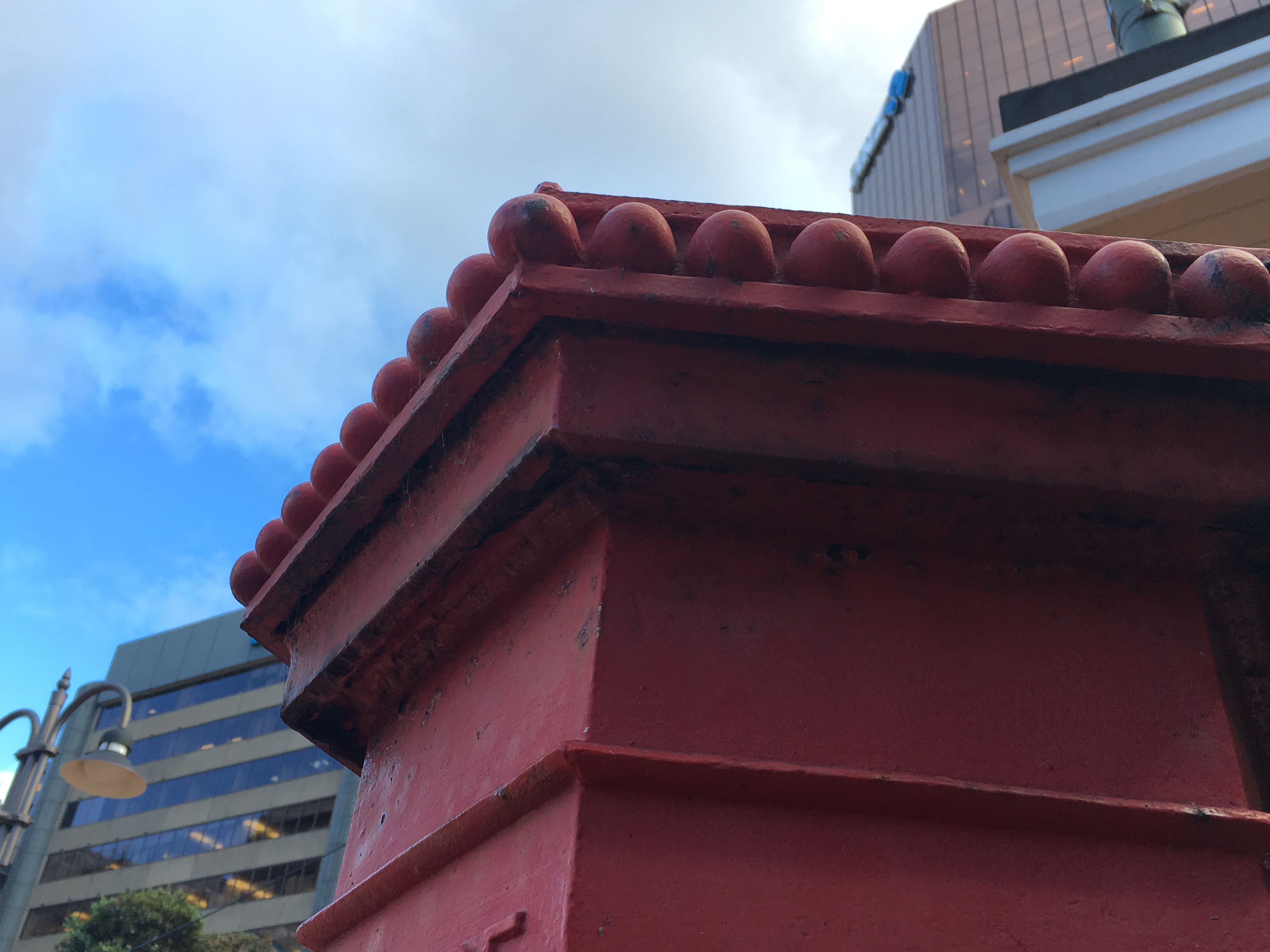Postal Box
Heritage object, Pillar Box
-
Constructed
c.1879 - c.1910
-
Heritage Area
-
Architect(s)
-
Builder(s)
Cast by P & D Duncan, Christchurch, NZ
-
The Penfold design combined simple design and functionality. The Post Office Square Postal Box is hexagonal in shape, and the roof is adorned with acanthus leaves while the cap is decorated with small spheres. It has architectural value for its design and construction in cast iron.
The Post Office Square Postal Box is a rare surviving example of a New Zealand manufactured cast iron pillar box that used the popular design of British architect John Wornham Penfold. It is associated with the postal service and is now one of the only remaining elements of this history left in Post Office Square.
These Postal Boxes have a high nostalgia value and attract a great amount of interest. When the Postal Service was replacing them with more modern alternatives many were purchased by museums and private collectors, while some that were particularly associated with the historic nature of an area were left in place.
-
Downloadable(s)
-
close
History
-
The Postal Box, located in Post Office Square named for the former General Post Office, is one of the few remaining reminders of the history of the area. The first Post Office, a timber structure, was established in the area in 1863 and was replaced with a grand masonry structure two decades later. By the 1970s, it had been decided that the building no longer served the changing needs of the Post Office, and in 1974 the building was demolished.
The cast iron pillar postal box dates from between 1879 and 1910, and is one of the ‘Penfold’ designs. These are the most famous of the early designs and are named for the architect who designed them, John Penfold. In 1865 Penfold had been invited to design a new standard pillar box. These Postal Boxes came in three sizes, nine types, and are extremely widespread throughout Britain and the former colonies. The design was cast in New Zealand and remained the standard through until the 1950s.
This postal box appears to be of the same type as those installed in Napier (Cat II, reference 4829) and Dunedin, which were among the last designs implemented in Britain and date from around 1872. The New Zealand Penfold boxes are the only ones worldwide that bear the insignia of King Edward VII, the rest throughout the former British controlled territories have the cypher of Queen Victoria. The Penfold design combined simple design and functionality. The Post Office Square Postal Box is hexagonal in shape, and the roof is adorned with acanthus leaves while the cap is decorated with small spheres. Red became the standard colour for the postal boxes in 1874.
By the mid twentieth century, the New Zealand Post Office Association had begun replacing the cast iron pillar boxes as they were considered unsanitary, leaky, and difficult to clear. Many were sold to museums or collectors, but some such as the Post Office Square Postal Box, and examples in Napier and Dunedin, were retained ‘in those districts where they were of historical interest’.
The Post Office Square Postal Box is an attractive piece of street furniture that contributes significant character to Post Office Square. Its bright red colouring and bold styling give it considerable visual appeal and it has become a local landmark in the Post Office Square heritage area.
-
Modifications
close
-
c.1879 - c.1910
-
Construction
-
-
Occupation History
close
Not assessed
-
-
close
Architectural Information
-
Building Classification(s)
close
Not assessed
-
Architecture
close
The cast iron pillar postal box dates from between 1879 and 1910, and is one of the ‘Penfold’ designs. These are the most famous of the early designs and are named for the architect who designed them, John Penfold. In 1865 Penfold had been invited to design a new standard pillar box. These Postal Boxes came in three sizes, nine types, and are extremely widespread throughout Britain and the former colonies. The design was cast in New Zealand and remained the standard through until the 1950s. This postal box appears to be of the same type as those installed in Napier (Cat II, reference 4829) and Dunedin, which were among the last designs implemented in Britain and date from around 1872. The New Zealand Penfold boxes are the only ones worldwide that bear the insignia of King Edward VII, the rest throughout the former British controlled territories have the cypher of Queen Victoria. The Penfold design combined simple design and functionality. The Post Office Square Postal Box is hexagonal in shape, and the roof is adorned with acanthus leaves while the cap is decorated with small spheres. Red became the standard colour for the postal boxes in 1874.
The Penfold designs followed a fairly standard template featuring a roof, cap, indicator tablet, aperture, notice plate, Crown, Royal cypher, and post office legends, and a base (usually painted black) where the name of the manufacturer can often be found either at the front or the rear.
-
Materials
close
Cast iron
-
Setting
close
The setting of the Postal Box is the Post Office Square Heritage Area. Many of the buildings in the immediate vicinity are modern, but there are important heritage buildings within a short distance. To the west is Featherston Street, where there are a number of heritage buildings of note, and to the east is the waterfront and the heritage listed Bond Store and the former Harbour Board Wharf Offices. The Postal Box is also accompanied by a historic telephone box, also painted red.
-
Building Classification(s)
close
-
close
Cultural Value
The Penfold design combined simple design and functionality. The Post Office Square Postal Box is hexagonal in shape, and the roof is adorned with acanthus leaves while the cap is decorated with small spheres. It has architectural value for its design and construction in cast iron.
The Post Office Square Postal Box is a rare surviving example of a New Zealand manufactured cast iron pillar box that used the popular design of British architect John Wornham Penfold. It is associated with the postal service and is now one of the only remaining elements of this history left in Post Office Square.
These Postal Boxes have a high nostalgia value and attract a great amount of interest. When the Postal Service was replacing them with more modern alternatives many were purchased by museums and private collectors, while some that were particularly associated with the historic nature of an area were left in place.
-
Aesthetic Value
close
-
Architectural
Does the item have architectural or artistic value for characteristics that may include its design, style, era, form, scale, materials, colour, texture, patina of age, quality of space, craftsmanship, smells, and sounds?
The Penfold design combined simple design and functionality. The Post Office Square Postal Box is hexagonal in shape, and the roof is adorned with acanthus leaves while the cap is decorated with small spheres. It has architectural value for its design and construction in cast iron.
-
Townscape
Does the item have townscape value for the part it plays in defining a space or street; providing visual interest; its role as a landmark; or the contribution it makes to the character and sense of place of Wellington?
Its bright red colouring and bold styling give it considerable visual appeal and it has become a local landmark in the Post Office Square heritage area. The Post Office Square Postal Box is an attractive piece of street furniture that contributes significant character to Post Office Square.
-
-
Historic Value
close
-
Association
Is the item associated with an important person, group, or organisation?
The Post Office Square Postal Box is a rare surviving example of a New Zealand manufactured cast iron pillar box that used the popular design of British architect John Wornham Penfold. It is associated with the postal service and is now one of the only remaining elements of this history left in Post Office Square.
-
-
Scientific Value
close
-
Archaeological
Does the item have archaeological value for its ability to provide scientific information about past human activity?
The archaeological values are unknown, but the Post Box is included in the NZAA Central City Archaeological Area R27/270.
-
Educational
Does the item have educational value for what it can demonstrate about aspects of the past?
As one of the only remaining elements of the Postal Service remaining in Post Office Square this postal box has educational value for informing visitors of the history of this area.
-
Technological
Does the item have technological value for its innovative or important construction methods or use of materials?
There is technical value in the design and construction of this Postal Box. The construction in cast iron is of particular interest.
-
-
Social Value
close
-
Public Esteem
Is the item held in high public esteem?
These Postal Boxes have a high nostalgia value and attract a great amount of interest. When the Postal Service was replacing them with more modern alternatives many were purchased by museums and private collectors, while some that were particularly associated with the historic nature of an area were left in place.
-
-
Level of Cultural Heritage Significance
close
-
Rare
Is the item rare, unique, unusual, seminal, influential, or outstanding?
As one of few remaining examples of a cast iron Postal Box found in New Zealand this pillar box has some rarity value.
-
Representative
Is the item a good example of the class it represents?
This Postal Box is an excellent representative of its type, this cast iron pillar postal box dates from between 1879 and 1910, and is one of the ‘Penfold’ designs. These are the most famous of the early designs and are named for the architect who designed them, John Penfold.
-
Authentic
Does the item have authenticity or integrity because it retains significant fabric from the time of its construction or from later periods when important additions or modifications were carried out?
It appears that no major modifications have been carried out on this Postal Box other than the addition of a new padlock.
-
Importance
Is the item important at a local, regional, national, or international level?
This Postal Box is primarily of local importance die to the value that it contributes to the Post Office Square Heritage Area, in particular aesthetic, historic, scientific, and social. As one of few remaining examples of its type in New Zealand, and its rarity values, it has some national importance.
-
-
Local / Regional / National / International Importance
close
Not assessed
-
Aesthetic Value
close
-
close
Site Detail
-
District Plan Number
17/8
-
Legal Description
Road Reserve
-
Heritage New Zealand Listed
Not listed
-
Archaeological Site
NZAA Central City Archaeological Area R27/270
-
Current Uses
unknown
-
Former Uses
unknown
-
Has building been funded
No
-
Funding Amount
Not applicable
-
Earthquake Prone Status
Unknown
-
-
close
Additional Information
-
Sources
close
- Astwood, Karen. ‘Post Box (Former) – Emerson Street and Dalton Street, Napier’. Historic Places Trust, unpublished registration report. August 2013
- Historic Places Trust. ‘John Wornham Penfold’. Professional Biographies
- O’Brien, Rebecca. ‘Pillar Letter Box – Hardy Street Nelson’. Historic Places Trust, unpublished registration report. 28 February 2003
- The British Postal Museum and Archive. ‘John Wornham Penfold and his pillar box’. 24/07/2009
- Wicks, Paul. ‘Anatomy of a letter box’. 2002.
- Technical Documentation close
-
Footnotes
close
Not available
-
Sources
close
Last updated: 9/25/2017 8:50:46 PM

